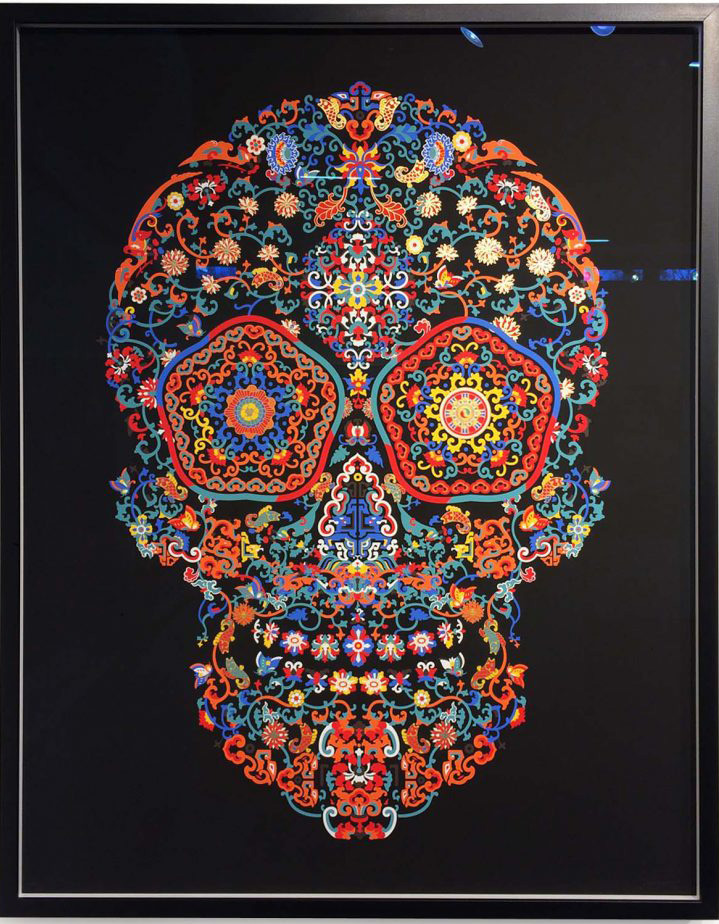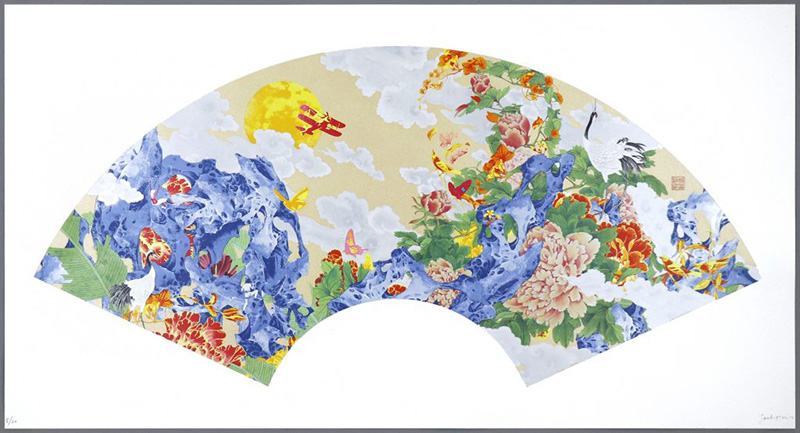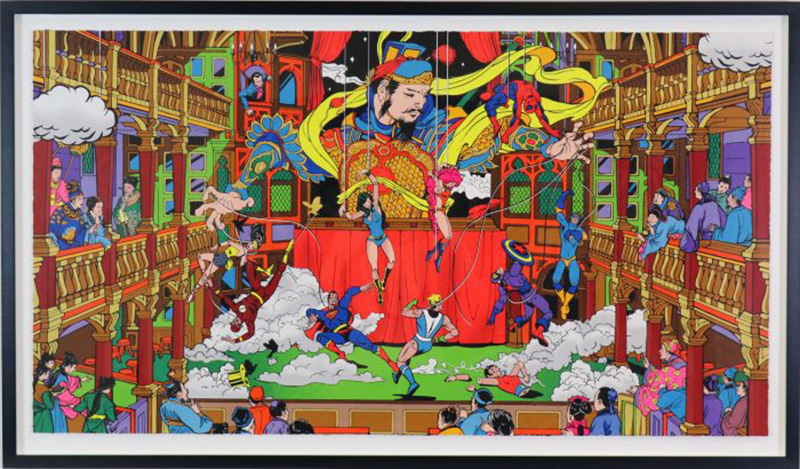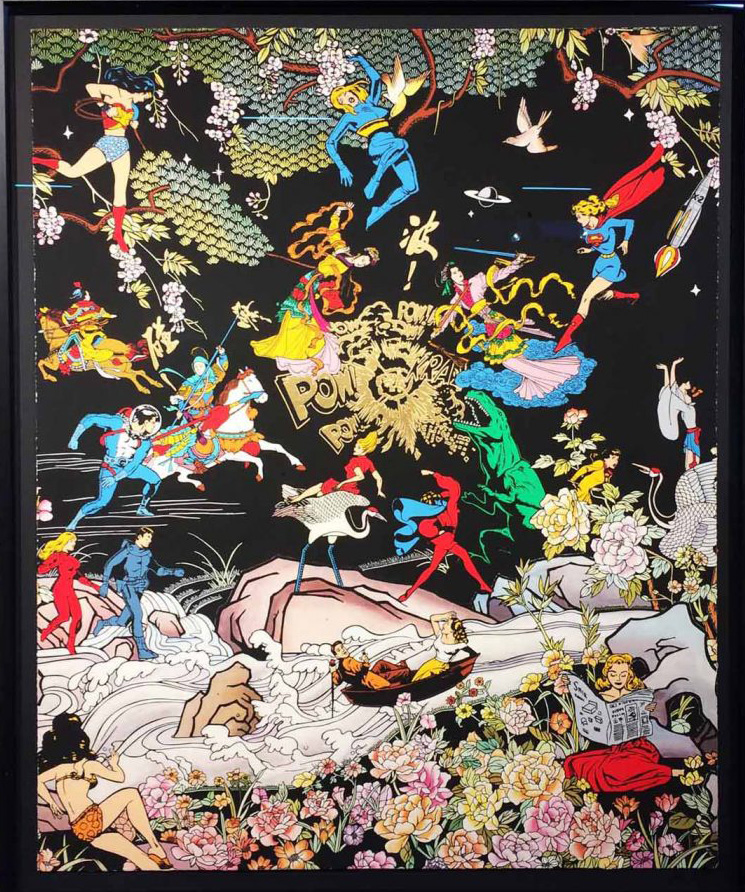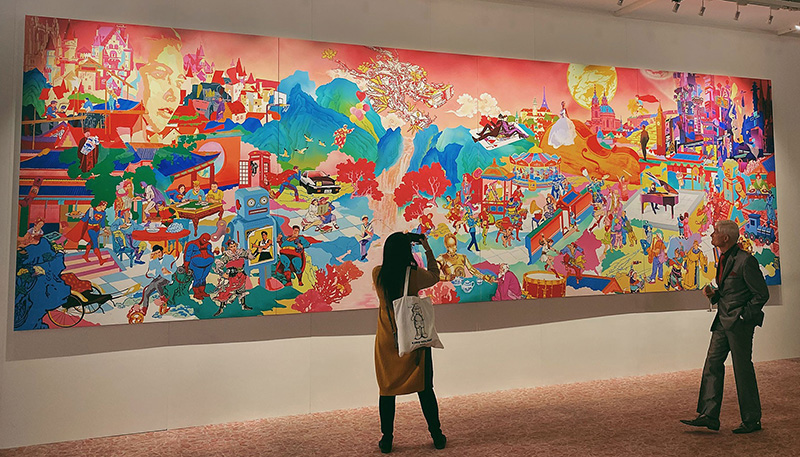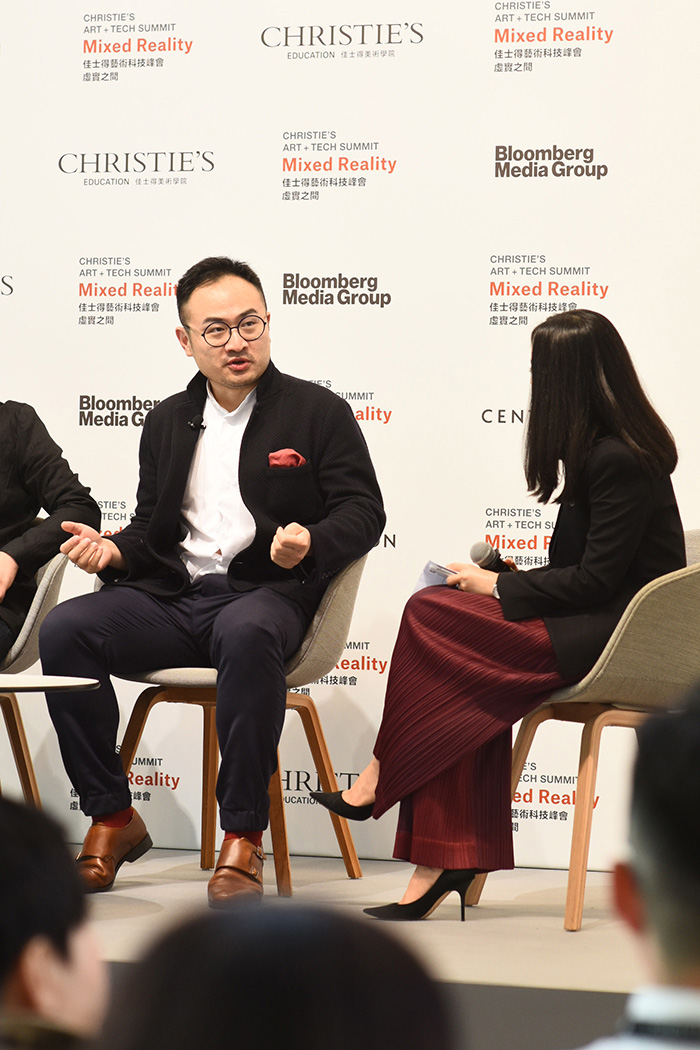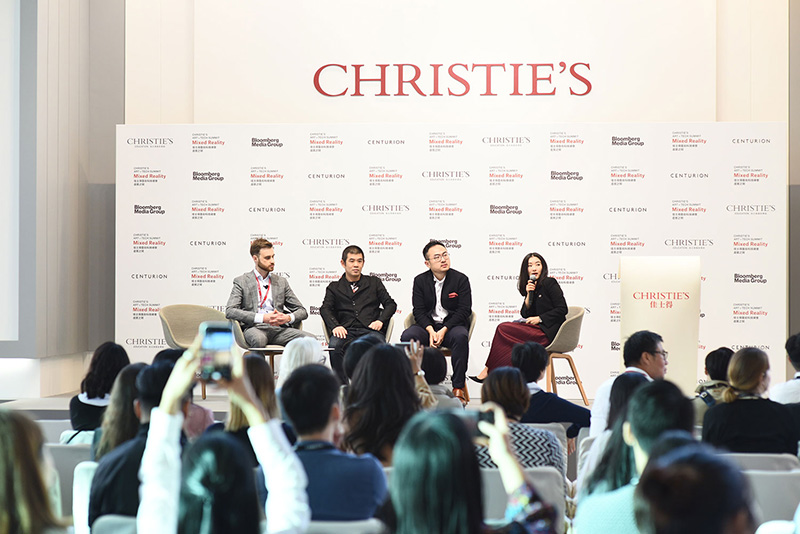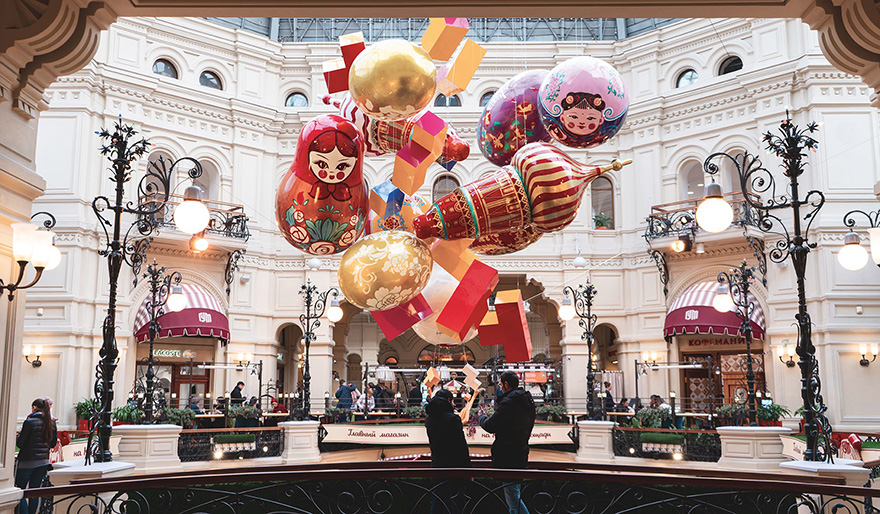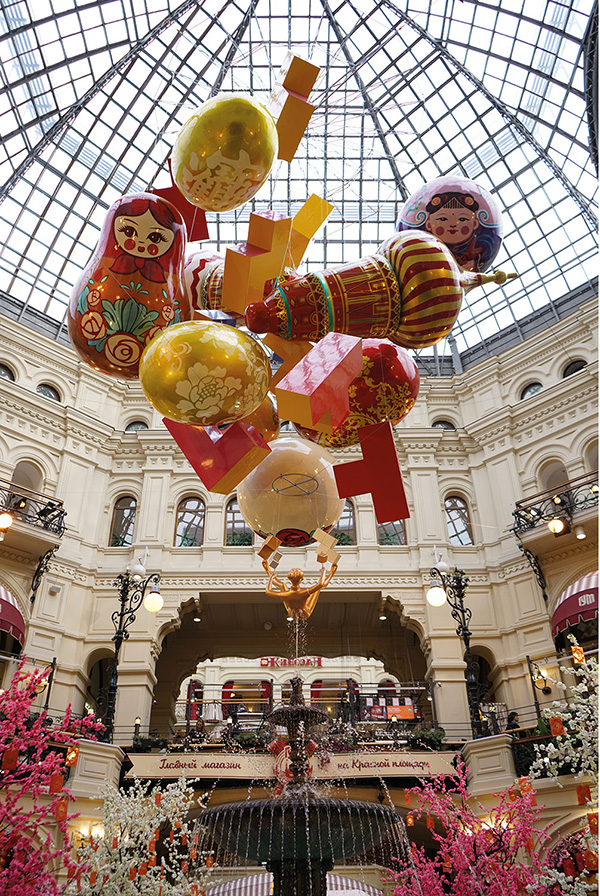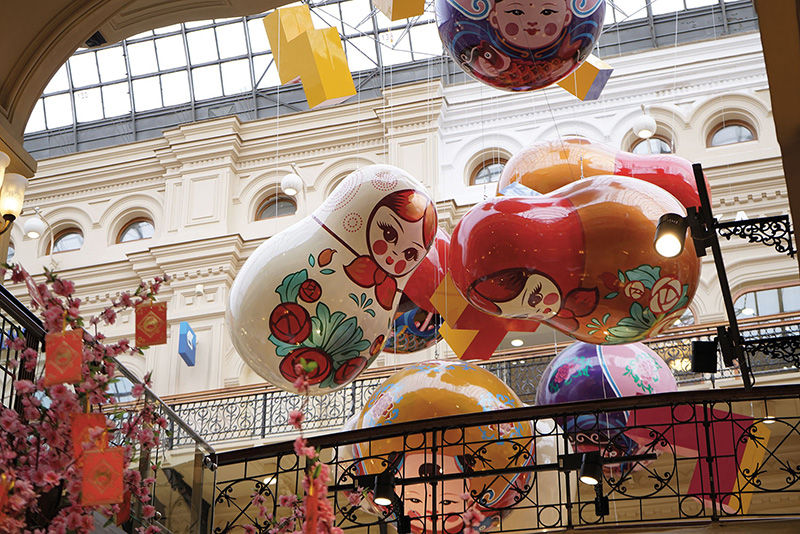 home
about
artists
exhibitions press
contact
purchase
home
about
artists
exhibitions press
contact
purchase |
|||
|
JACKY TSAI Press https://news.artnet.com/buyers-guide/eyestorm-london-jacky-tsai-2328477 Spotlight: London-Based Artist Jacky TsaI Synthesizes Eastern and Western Symbols, From Mahjong Tiles to Memento MoriRepresented by Eyestorm, the artist has a vibrant artistic style rooted in traditional Chinese styles and Western Pop art.
Every month, hundreds of galleries add newly available works by thousands of artists to the Artnet Gallery Network—and every week, we shine a spotlight on one artist or exhibition you should know. Check out what we have in store, and inquire for more with one simple click. What You Need to Know: Founded in 1999, Eyestorm initially focused on—and quickly gained prominence for—releasing limited artist editions. Over the course of more than two decades, Eyestorm has worked with some of the world’s most famous artists, such as Maurizio Cattelan, Damien Hirst, Jeff Koons, and Ed Ruscha, just to name a few, many before they had become household names. Eyestorm continues to offer works by established artists, but also showcases a dynamic and diverse range of emerging artists, creating an opportunity for collectors to invest in the work of early-career artists. In 2011, Henrik Riis, a member of a group of entrepreneurs who acquired Eyestorm, was named CEO, and began a process of revitalization that stayed true to the gallery’s ethos and mission. Part of this included the addition of London-based Chinese artist Jacky Tsai, who at the time was first gaining traction in the art world and has since become internationally recognized and exhibited. About the Artist: Jacky Tsai (b. 1984) has an artistic practice centred on the synthesis of Eastern techniques and symbolism with Western Pop art references, resulting in a unique visual lexicon that simultaneously reflects and comments on contemporary reality. Working with a wide range of mediums, from traditional canvas-based works to NFTs, Tsai’s work materially engages with themes of time, creating work that is in “past, present, and future tenses.” Tsai received his B.A. at the China Academy of Art, after which he relocated to London to study at Central Saint Martins, and in 2022, he was named Artist of the Year by the Digital Art Fair, Hong Kong, celebrating the decade the artist has spent working in both traditional and digital art mediums. His first major museum show, “Life-Fantasy,” in China opened the same year, and he is presently the subject of a solo show at MOCA Bangkok, “Reincarnation,” on view through July 23, 2023. Why We Like It: Tsai’s body of work contains an intriguing series of dichotomies—between the narrative and abstract, serious and humorous, traditional and avant-garde, and, most apparently, Eastern and Western. Often, the antecedents for individual motifs and compositions are immediately recognizable, but when considered as part of the whole, the unique balance Tsai imparts through crafting each work results in something that transcends the individual elements. In Gambling Skull (Jack of Diamonds) (2014), for instance, the overall composition is that of a common playing card with a skull. Upon closer inspection, however, the skull is made up of juxtaposed and overlaid motifs drawn from gambling culture—the teeth are comprised of mahjong tiles, the eyes roulette wheels. The work is from a series of 15 unique playing card compositions. Other works, such as Puppets (2016) illustrate Tsai’s deft employment of Eastern and Western cultural icons. Here, a scene is set within a traditional Chinese puppet house, but the puppets performing are characters from contemporary DC and Marvel comic book universes.
Jacky unveiled Parody of Jay’s Music at Christie’s Art+Tech Summit05th Dec 2019, Hong Kong
Christie’s Art+Tech Summit is an annual one-day conference and part of an ongoing initiative to spark dialogue about the role and potential impact of emerging technologies in the art world. Jacky was invited as a guest speaker for the panel talk Breathing Life into the Surface to discuss his new paiting Parody of Jay’s Music. Through augmented reality (AR), Jacky along with visual artist and director of Future Power Station Yibi Hu and Co-Founder & COO of The Parallel Alexander Padhaiski, added life to the 8-metre painting. Supported by the famous Mandopop singer and art collector Jay Chou, the artwork took Tsai a year to complete. The painting is inspired by the singer's 20 years of music career.
Jacky Tsai X GUM Installation
|
|||
 'Circus Girl' (2018) |
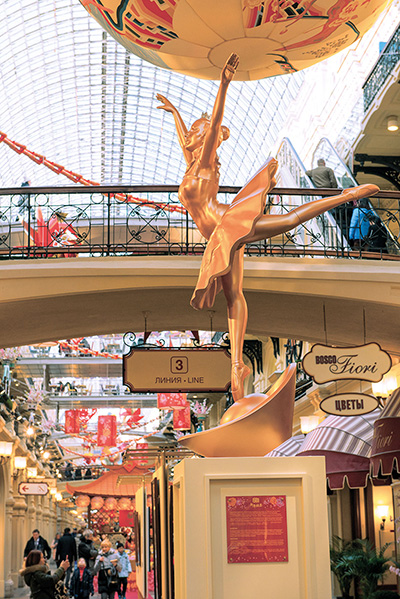 'Ballerina' (2018) |
To accompany the visual aspect of the exhibition at GUM, Tsai composed and orchestrated some vibrant, energetic and touching cross-cultural music to further emphasis the unity between the two nations.
The works were displayed at the store for a period of one month during February 2018 to coincide with Tsai’s solo exhibition ‘Fly Me To The Moon’ at the MMOMA.
https://london.lecool.com/interviews/jacky-tsai/

Jacky Tsai
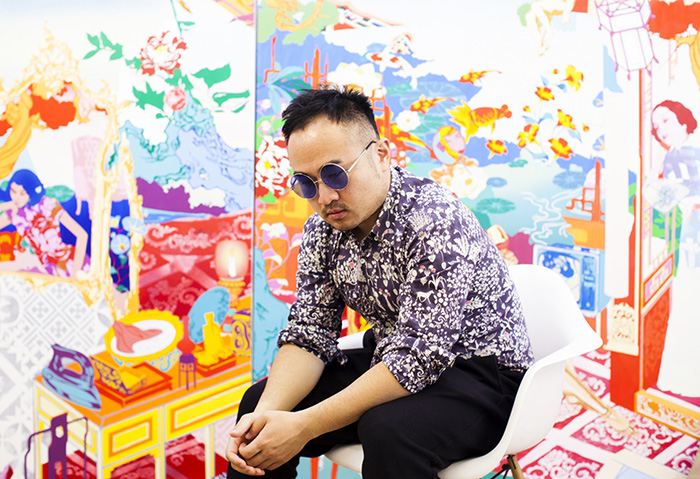
By Josh Jones in ART
Down at Unit London Gallery right now, you can find Chinese Pop
Artist Jacky Tsai’s biggest solo exhibition yet. ‘>Reincarnation‘
sees the brilliant contemporary artist creating a truly individual
style, bringing his massive art pieces to Unit London in Hanover
Square. We went to his studio for a chat.
Was it nice to curate your own work?
Interview: Josh Jones
This is the largest solo show that you’ve done isn’t
it?
It is! I haven’t done a solo show in the UK for a
while. Even though I’m based here I have so many projects going on
and working with different brands from all over the world so I’ve
been doing shows in different countries. So this is the first time
in two years that I’ve done a solo show here. That’s why I’ve got so
many artworks to show. Each of the large canvases are hand painted
and there are so many procedures to make one artwork. They take a
while too – each one takes two months each. I like to make sure that
every element in my artwork is in the right position because I do
collage art so if you change one part by just one centimetre it
affects everything else. Everything has to be in balance.
Are they all new pieces?
No, no. The main floor of the gallery will be all new
pieces but in the basement there will be a selection of my favourite
pieces. Those pieces are all chosen from my warehouse in Hong Kong.
I don’t want to sell all of my art so I collect my own work to have
a nice record. When Unit London approached me I liked their idea
that I could have a kind of retrospective of my work as well. So I
said OK, let’s fully commit to this show and dig out some old
favourites! The most amazing part of it for me is this is almost
like a group show – the aesthetic is, of course, the same because it
all comes from me but the techniques can be totally, totally
different. Some of the pieces are from four years ago and I’ve
changed a bit since then. When I’ve put them all together, even
though the pieces are different mediums and different formats,
people will still know that they’re Jacky Tsai art work. It’s very
exciting for me.
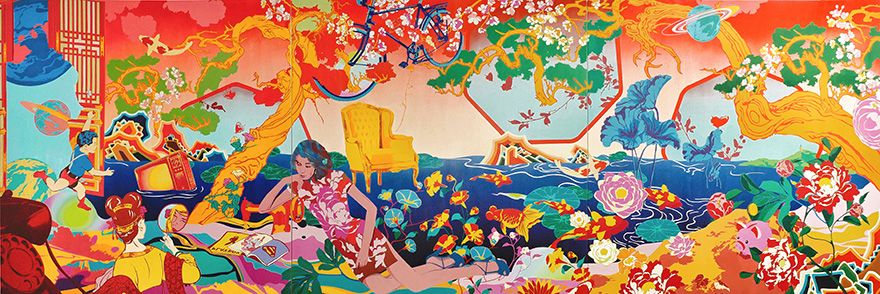
It was, definitely! I have made the decision as to
where each artwork is positioned and normally that’s something that
a curator or the gallery will do. But for me, with this show, I have
total control and also total freedom. Unit London is an artist-led
gallery and they respect what we do!
You’re known for your meld of Chinese art and Western
pop culture references, how did you start deciding that combining
these two things were the way you wanted to go?
That’s a good question. First of all, the show is
called Reincarnation and that, to me, means your self moving from
your past life, your current life and future life. For me it’s
almost like time travelling. You can go back to see your early life
and you can travel to the future to see yourself there. You could be
an animal, you could be a human – who knows? All possibilities are
there. So within my artwork normally I’ll have a traditional figure
from the past, a current figure and a future figure. They always mix
up and create something completely new. So that’s the idea! Western,
Eastern, Future, Past: everything together.
You’ve used some traditional Chinese craft for some
of the pieces in Reincarnation – are there any that we might not
know about?
I have several pieces in the show that use lacquer
carving, which is almost a dying Chinese craft. It’s carved by hand
and then painted by hand with gold and silver leaf. It’s quite an
ancient technique in China. I’ve been practising it for a long time
and I have a team who do it – there are only about five or six older
craftsmen who can do the high level . The carved
pieces in the show were all done in China and then shipped here.
You’re influenced by Warhol and Liechtenstein. Can
you remember the first time you came across work?
Of course! I grew up in China and before I came to
London 12 years ago I was at the university in Shanghai, I was
reading all the books about Liechtenstein and Andy Warhol. They have
influenced me a lot. They influenced me massively. Their work is
almost the opposite to Chinese art aesthetic, which is watercolour
landscapes. Everything is neutral and free flowing. It’s not like
the processed, very precise work you get in Pop Art. Liechtenstein
for example is very rigid with vivid block colours and bold black
lines. This opened my eyes and I was addicted to Pop Art. When I
came to London I was thinking how I could make my art different. I
didn’t want to copy Pop Art, I wanted to create something different.
With the experience that I had both in China and the UK I could
naturally combine these two cultures together in my art. Now a lot
of people want to do this kind of art but they can’t because they
haven’t experienced both cultures. For me it happened very
naturally. I just want to do Pop Art in a Chinese way. I’m not
copying anyone.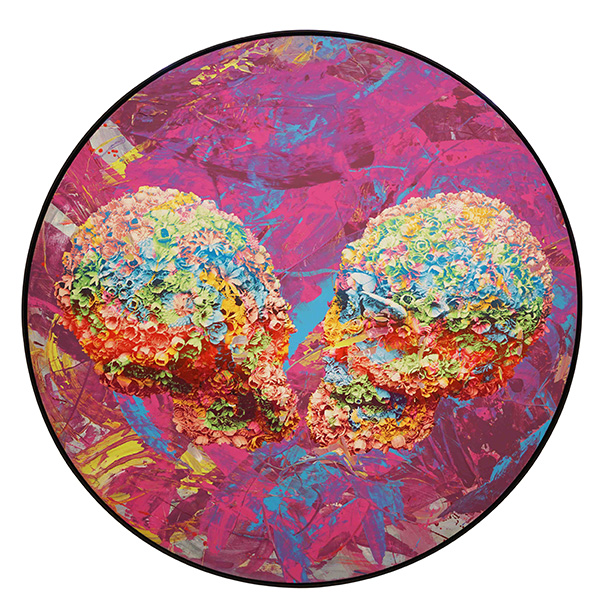
Photo: Tom Medwell
E-mail: info@hayhillgallery.com


